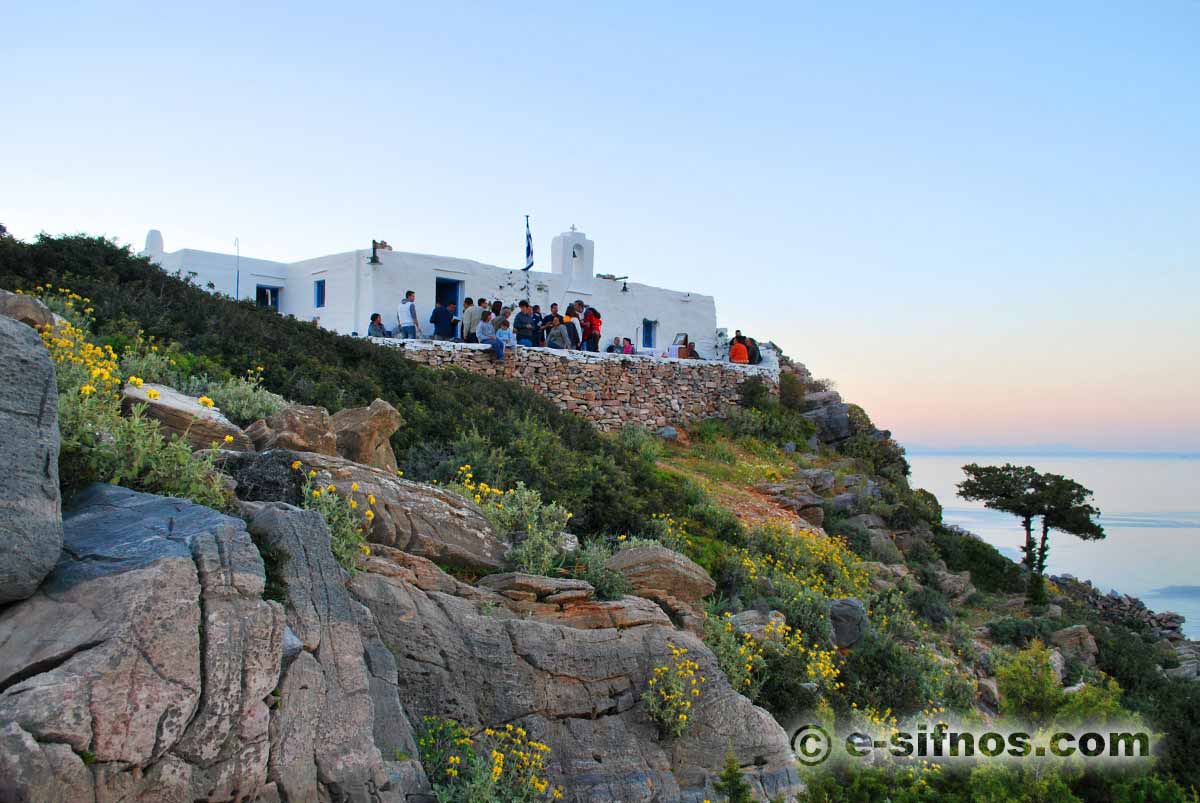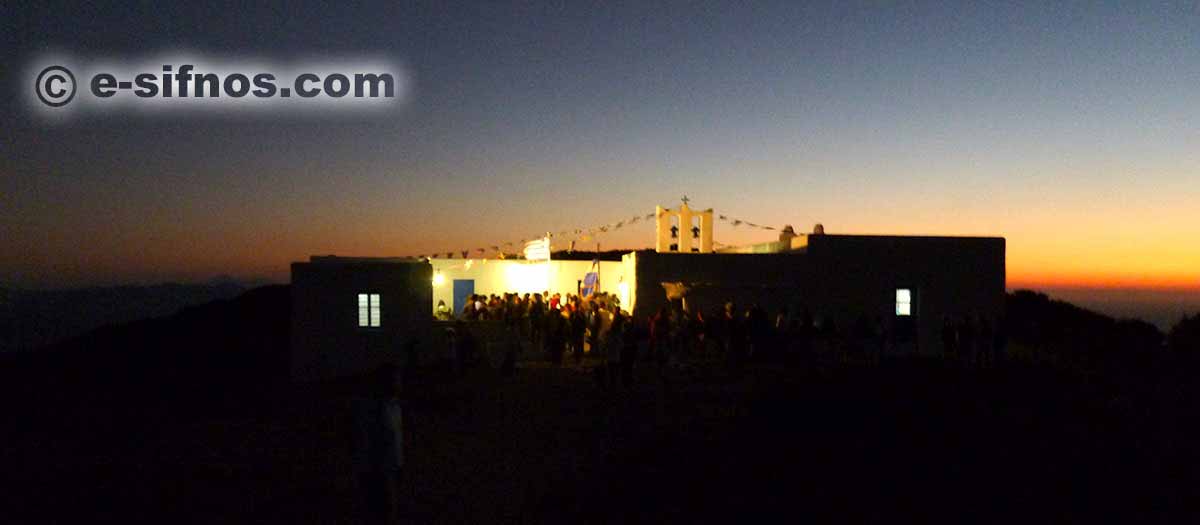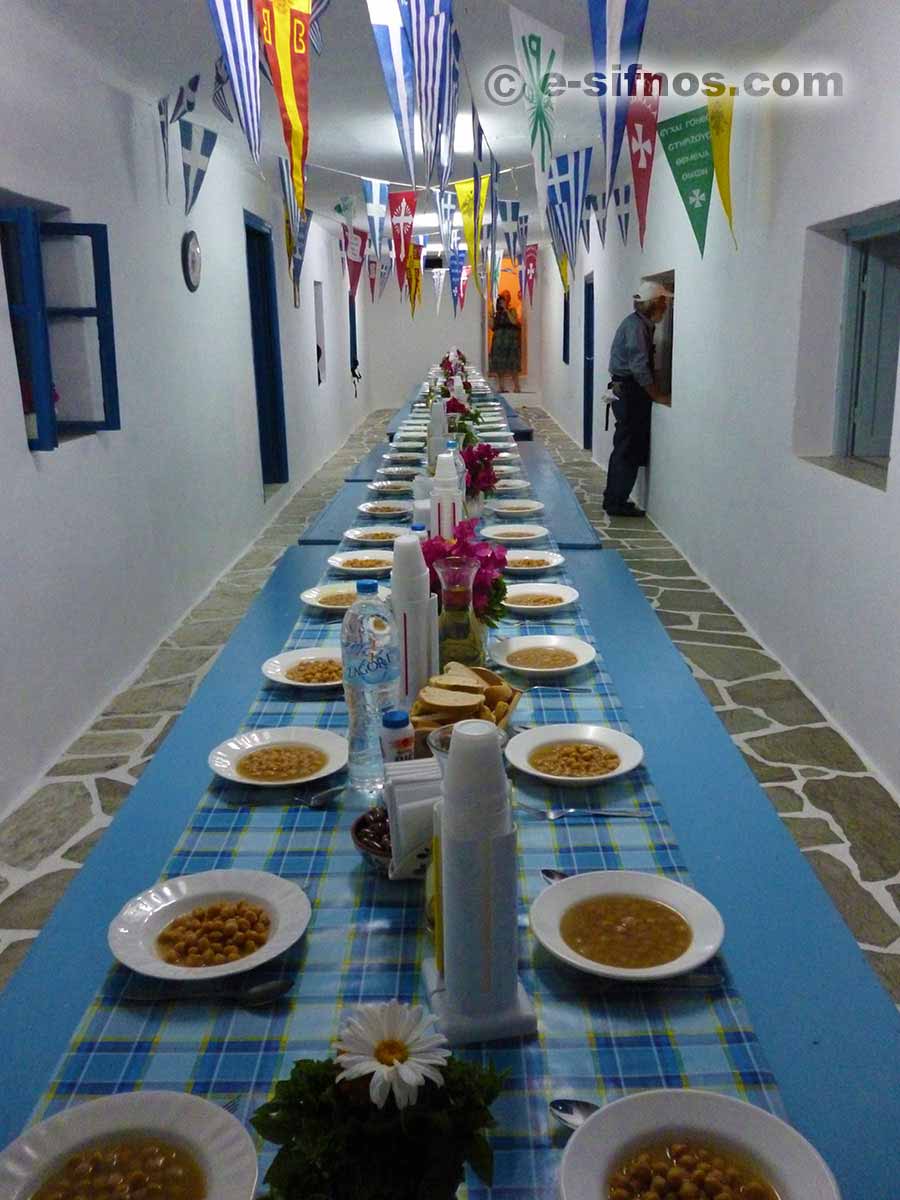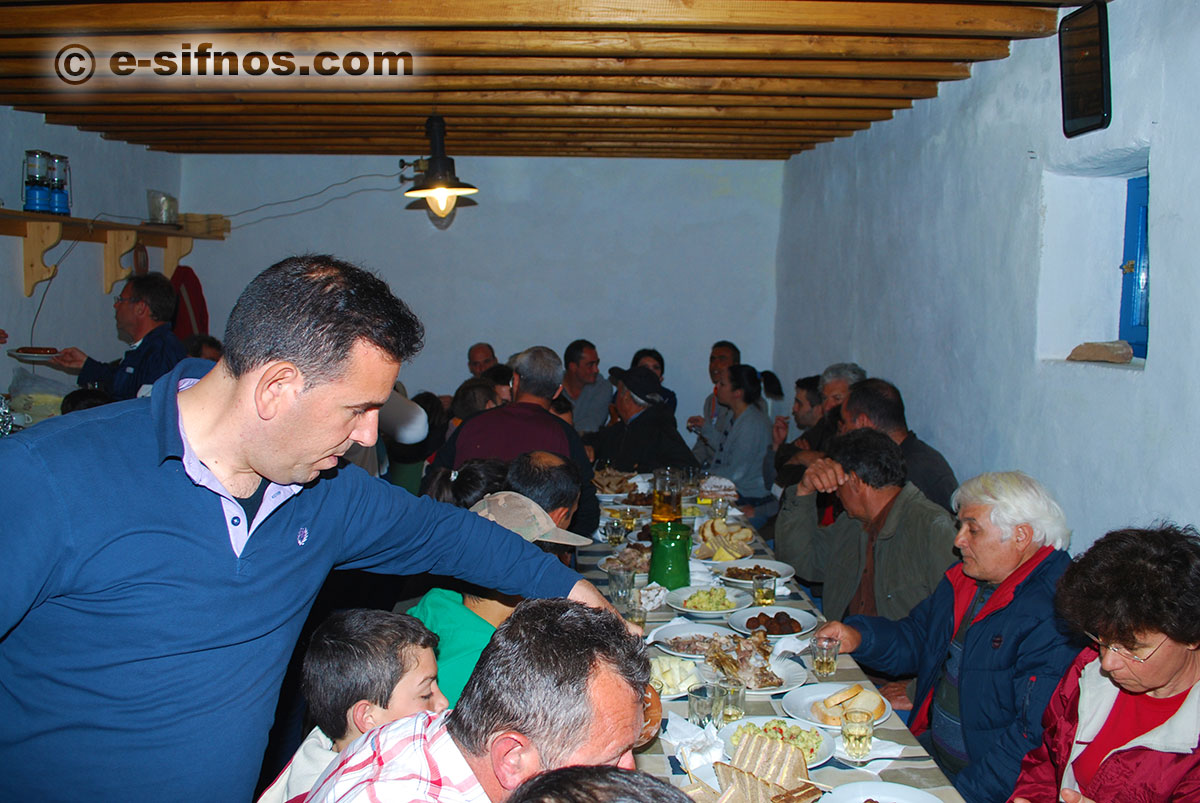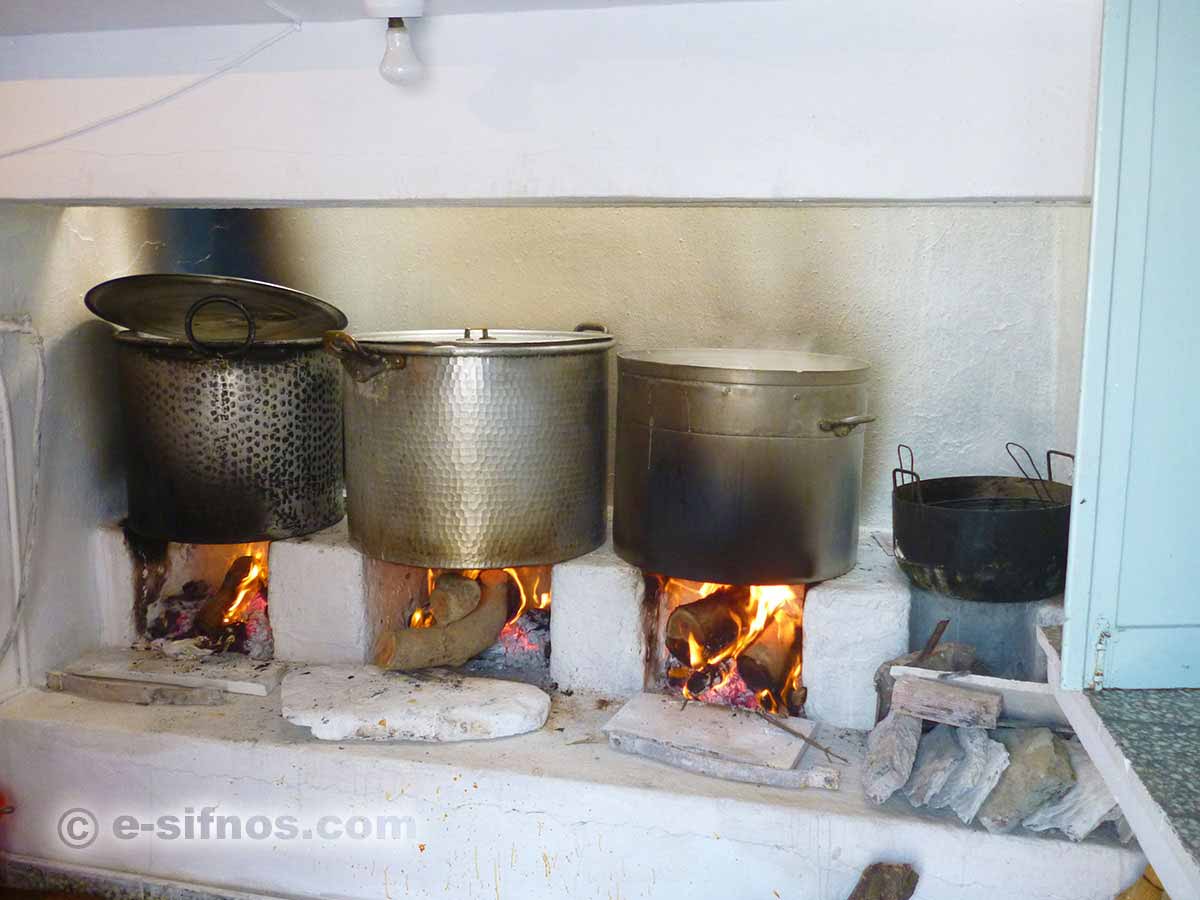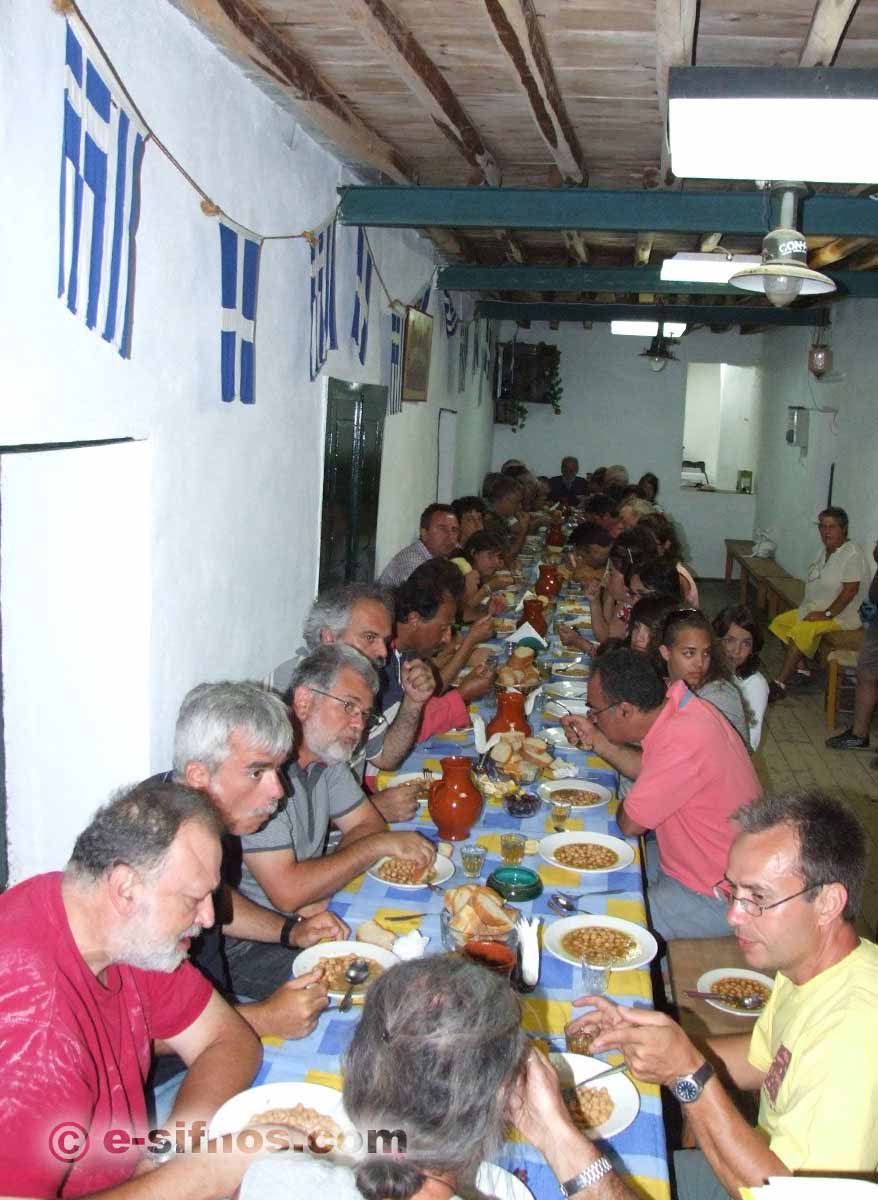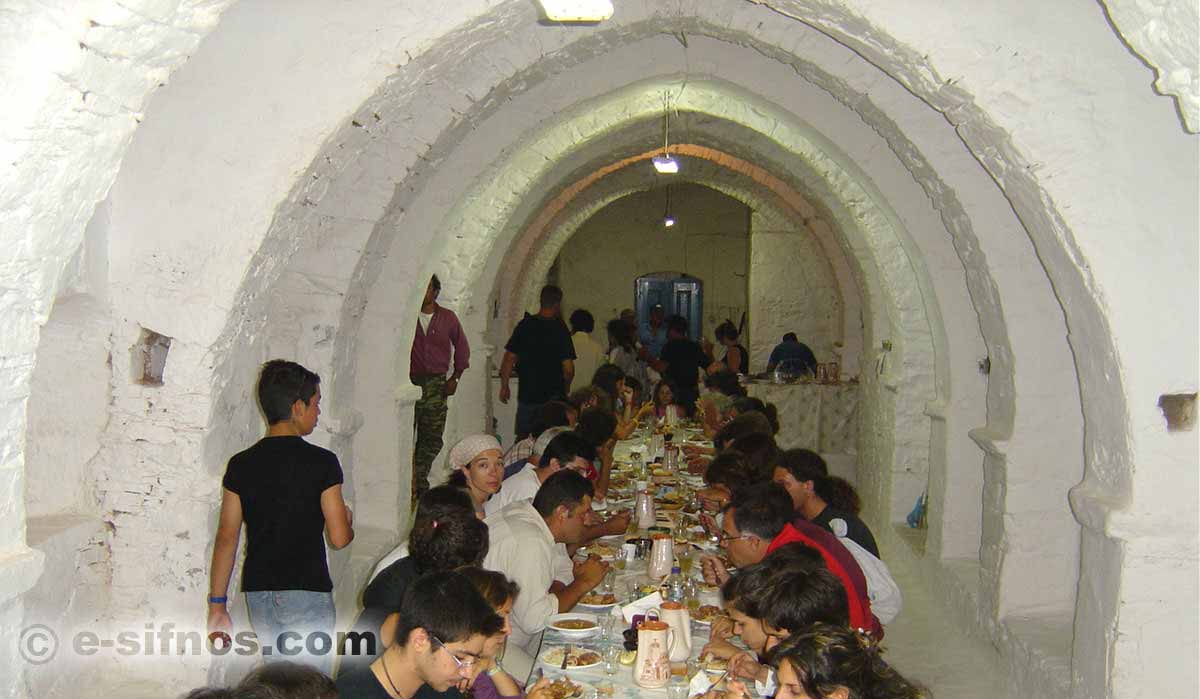Traditional religious feasts in Sifnos
Customs and traditions on the island of Sifnos
An authentic experience of tradition and hospitality
In Sifnos, the tradition of festivals (panigiria) is deeply rooted in the local culture, keeping alive the spirit of hospitality and community. There isn’t a single month, whether winter or summer, without a celebration at one of the 235 chapels or monasteries on the island. These festivals are not organized by the churches or local authorities, but by the residents themselves, known as "panigirades," who take on the full responsibility and cost of the event.
If you find yourself on the island and have the chance to attend one of these celebrations, don’t miss it! It’s an experience that will bring you closer to the authentic Sifnian tradition, allow you to meet the locals, and enjoy a true celebration.
The festival: Music, food, and spontaneous celebration
Most festivals take place on the eve of the saint’s feast day at the chapel. The celebration begins with an evening prayer service (esperinos), where people gather to pray, but as soon as the service ends, the atmosphere changes. The first notes of the violin and the lute—this traditional musical duo is called "takimi" in the Sifnian dialect—begin to play.
Meanwhile, large tables are set with food, always cooked over a wood fire. The chickpea stew (revithada), which has been slow-cooked overnight in a wood oven, is served first, followed by stewed meat with pasta. If the celebration falls during a fasting period, the meat is replaced with cod. Everything is accompanied by plenty of wine, continuously refilling glasses, as guests loudly toast: "To the health of the panigirades," "cheers to the cooks," "cheers to the servers"! The last toast is done by tapping a spoon or fork against the plate, making noise!
The celebration doesn’t stop there. The songs, dances, and improvised rhymes continue until the early morning hours. It’s incredible how, in the warm atmosphere of the festival, locals can spontaneously create poems filled with wishes, jokes, and teasing.
The next morning, after the Divine Liturgy, the icon of the saint is taken from the church and hosted at the home of the new panigirades, who will be responsible for organizing the celebration the following year. A tradition that continues unbroken, connecting the generations of Sifnians in a unique way.
Hosting the icon: A tradition passed down through generations
One of the most unique customs of Sifnos is the hosting of icons in people’s homes. Traditionally, many churches and chapels on the island were privately owned. Some were built by individuals, while others were inherited or dedicated as vows. Many believers, feeling gratitude for a miracle or overcoming a difficult time, would take the icon of the saint into their home to care for it and honor it properly.

This tradition continues today. More than 300 icons remain outside their churches and are hosted in homes, sometimes even far from Sifnos, as the panigirades take them to their winter residences in places like Athens, Piraeus, Thessaloniki, and beyond.
Those who host an icon in their home have specific responsibilities. They place it in the best room, on an embroidered pillow, with two candlesticks on either side and a continuously lit oil lamp. Every morning and evening, they burn incense in front of it, and on festive days they hold prayer services. On the first day of each month, they conduct a blessing ceremony with a priest.
Beyond spiritual care, maintaining the icon is equally important. The panigirades ensure it is cleaned, preserved, and, if necessary, restored. It is a deeply honorable duty, passed down through generations, strengthening the bond between Sifnians and their saints.
The only icon that never leaves the island
Among all the icons hosted in private homes, there is one and only one that never leaves Sifnos. This is the icon of Panagia Chrysopigi, the protector of the island.
The icon of Panagia Chrysopigi is kept in the metropolitan church of the village of the current panigirades, where it remains all year until it returns to the monastery of Chrysopigi on the day of its grand festival. This is an exception to the rule, highlighting the importance of this icon for the people of Sifnos.
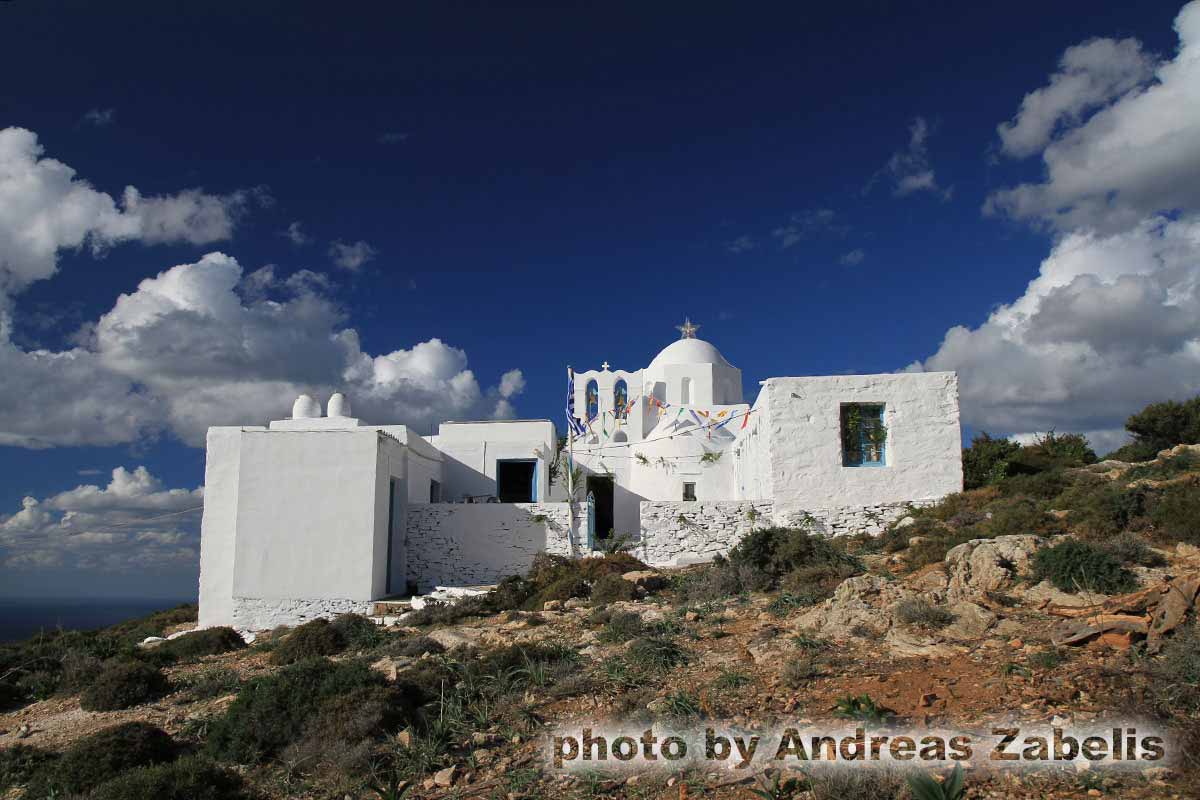
Experience the festival up close
The festivals of Sifnos are not just religious celebrations—they are once-in-a-lifetime experiences. The simplicity, the warm-hearted people, the music, the food, and the revelry create an atmosphere of pure island joy.
Some chapels are easily accessible, while others require hiking on trails or even traveling by boat, depending on the weather. If you are in Sifnos, ask the locals if there is a festival during your stay, and don’t hesitate to attend.
No invitations are needed, nor any formalities. Just bring your enthusiasm for a good time and immerse yourself in the magic of a living tradition that evolves over time.
Festivals during the tourist season
Some of the festivals that take place during the tourist season include:
- May or June (movable feast): The Ascension of Christ, celebrating the patron saint of Sifnos, Chrysopigi.
- July 19: Prophet Elias (many monasteries in Sifnos celebrate). It is worth visiting the festival of Prophet Elias Apsilos.
- July 26: Agios Panteleimon in Cheronissos.
- August 14: The Dormition of the Virgin Mary (many monasteries in Sifnos celebrate). The festival of Panagia "To Toso Nero" is highly recommended.
- August 28: Agios Ioannis the Faster in Faros and Mavro Chorio.
- August 31: Agios Symeon in Kamares.
- September 5: Archangel Michael in Vathi.
- September 6: Agios Sozon (Ai Sostis).
- September 8: The Nativity of the Theotokos at the Monastery of Vrisi in Exabela.
- September 13: The Exaltation of the Holy Cross in Faros and Choni.
- September 14: Agios Nikitas in Seladi.
Questions & Answers (FAQ) — Religious Festivals of Sifnos
The festivals of Sifnos are religious celebrations held in churches and monasteries, usually with Vespers on the eve of a Saint’s feast day. This is followed by the “table” with chickpea stew cooked with wood in a cauldron, and meat or minced meat with pasta or potatoes, accompanied by music and dancing. The following day, the Festive Divine Liturgy takes place.
The “panigyras” (festival host) undertakes the organization, hospitality, and all expenses.
There are no “most important” festivals. Each celebration is unique, and dozens take place during the tourist season (even more during winter).
However, those that stand out due to high attendance are the feasts of Panagia Chrysopigi (movable feast, eve of the Ascension), Prophet Elias (July 19), the Dormition of the Virgin Mary (August 14), and the Exaltation of the Holy Cross (September 13).
There is no fixed schedule. The festivals are announced by parishes, hosts, local associations, and the Municipality.
Ask at your accommodation or in local shops about the festivals taking place during your stay on Sifnos, as well as the times for Vespers and the Liturgy.
Yes, everyone is welcome. Voluntary monetary donations are also accepted (a tray is passed around for the maintenance of the church), and guests may kindly help with serving or tidying up.
Dress modestly inside the church and avoid flash photography & noise during the service.
During the Vespers and the Divine Liturgy, we must not make noise, not even in the courtyard. We should keep in mind that this is a religious celebration taking place in a sacred space. After the Vespers, the festivities begin.
Say “Chronia Polla” (“Many happy returns”), “Kali chronia” (“See you next year”), or “Voitheia sas” (“May you be blessed”), wait your turn for the offering, and show respect to the hosts.
Chickpea stew (cooked in a cauldron) and meat or minced meat with pasta or potatoes, cheese, bread, olives, and wine.
There is often live traditional music — a violin–lute duo — and island dances.
Some are accessible via footpaths or dirt roads, so you’ll need closed shoes, a flashlight, and to leave early for parking. For safety, follow someone who knows the route.
Only where permitted by those in charge. Ask the priest or the church warden on site.
Bring a light jacket, even in summer.
Flashlight, water, hat, comfortable shoes, and (optionally) a personal cup/set to reduce waste.
Bring a small bag for your trash.
No, participation is free. You may light a candle or leave a small donation for maintenance and event expenses.
Yes, it’s a family-friendly experience, with care needed around steps/slopes and areas near the sea or roads.
Yes, with discretion and without flash during the service.
It’s polite to ask permission before photographing people up close.
Gallery
